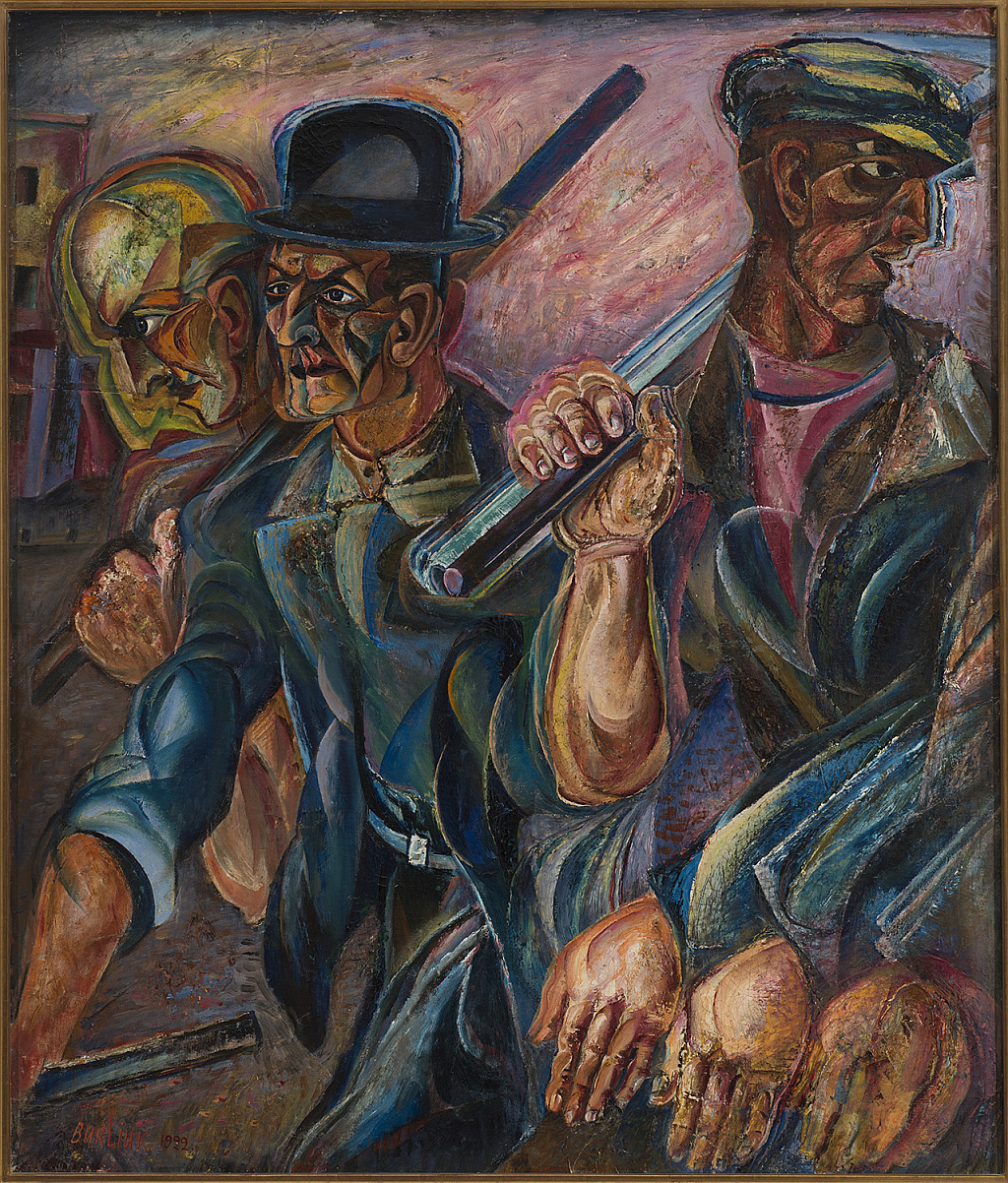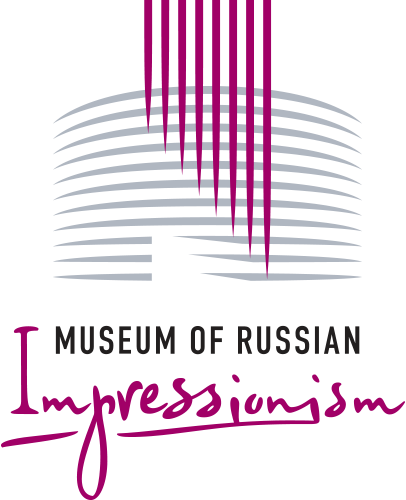
Workers, 1924
David Davidovich Burliuk
Oil on canvas
106.7X91.4
Collection of Maya and Anatoly Bekkerman, New York
David Burliuk came in the USA with the intention of becoming the "father of American futurism." In an effort to win the attention of critics and viewers, he created a number of monumental paintings, among which was a work called "Workers".
The picture was devoted to the construction of skyscrapers. In this painting, Burliuk portrayed a dynamic procession of ordinary workers. Their powerful bodies and large hands represent the physical strength and human will, owing to which reinforced concrete skyscrapers grew out of the ground and ascended into the sky. The rays of electric lights support mobility of the figures. Reflecting on the pavement, they break into many facets, imitating the visual noise of the big city.
Skyscrapers of Manhattan and people working at high altitude without any insurance, made a lasting impression on Burliuk. He saw this as a sharp futurism and described high-rise buildings as: "Teeth of steel claws of the building, sticking into the ground..."
The canvas was exhibited in 1926 in Philadelphia at an exhibition dedicated to the 150th anniversary of the USA independence. Burliuk was particularly proud to talk about the scale of the work and wrote, "The picture was the second largest among the largest paintings of the exhibition."
The painting didn't find its buyer. After the exhibition, Burliuk took it off the stretcher and, as he had no workshop, rolled the canvas up and sent it to the attic of his house.
Only in the mid-1950s, when the gallery owner Louis Shapiro became interested in the work of Burliuk, the picture was remembered. Due to improper storage and dampness, a significant part of the canvas and the painting layer was lost irretrievably. They managed to save only the Central fragment with the faces of the workers, which is presented at the exhibition. The way the picture looked initially, we know from the black and white pictures of the 1920s, published in the journal of Mary Burliuk "Color and Rhyme".
Especially for the exhibition "David Burliuk. I speak out!" a virtual reconstruction of the painting in color was carried out. It became possible thanks to the art history analysis of Burliuk's pictorial handwriting and modern technologies. No doubt, if the picture survived, now it would be included in the list of the most important works of Burliuk-painter.



